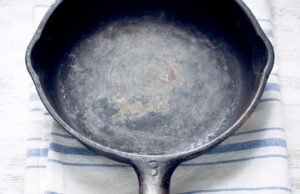As an Amazon Associate, I earn from qualifying purchases at no extra cost to you.
How to Clean Dishwasher with Salt – Simple Tricks You’ll Love
Have you ever noticed your dishwasher leaving spots or smelling a bit off? It’s surprising how something so simple can cause problems in your kitchen. Sometimes, regular detergent isn’t enough, and stubborn grime sticks around. But did you know a common kitchen item can make a big difference? In this article, we’ll explore how to clean dishwasher with salt and make it work like new.
To clean your dishwasher with salt, first locate the salt compartment and fill it carefully. Use dishwasher-specific salt, not table salt. Sprinkle salt at the bottom for deep cleaning, optionally combining with vinegar or baking soda. Check filters and spray arms regularly to prevent clogs. Adjust the salt amount based on water hardness, and refill as needed. Regular use removes limescale, improves detergent performance, prevents odors, and keeps dishes sparkling.
Why Dishwasher Salt Works So Well
Dishwasher salt is not the same as table salt, and that makes a big difference. It’s specially designed to soften water, which prevents limescale from building up inside the machine. Hard water often leaves white marks on glasses and dishes, and salt tackles that easily. Imagine running a cycle with salt and seeing your glasses sparkle again—it feels great.
Many people wonder if using table salt works too. While it might help a little, it can harm the dishwasher because it doesn’t dissolve the same way. Dishwasher salt dissolves slowly and reaches all corners of the machine. You can even sprinkle some in the filter area for extra cleaning power.
Another benefit is that salt improves detergent performance. If you notice your dishwasher isn’t cleaning well, adding salt can change that. It works like a booster, letting your soap do its job without fighting hard water. Plus, it’s safe and chemical-free, so it’s a gentle way to protect your machine.
Finally, salt prevents clogging over time. Hard water deposits often block spray arms and filters, reducing efficiency. Using salt keeps these parts clean naturally. Many people find they save time and avoid expensive repairs. So, it’s a small step that pays off in the long run.
- Softens hard water
- Removes limescale
- Boosts detergent effectiveness
- Prevents clogs and buildup
How to Add Salt to Your Dishwasher Correctly
Adding salt sounds easy, but a few tricks make it more effective. First, check your dishwasher’s manual to locate the salt compartment. Most are at the bottom, near the filter, and they usually have a cap. Open it carefully, and don’t overfill because the salt needs room to dissolve during washing.
Next, pour the salt slowly using a funnel if possible. Some people spill, and it can be messy, so take your time. You’ll notice a small indicator light in many machines that shows when the salt level is low. This makes it easier to know when to refill.
It’s also a good idea to run a quick rinse after adding salt. This clears any granules that might be on the bottom or near the spray arms. You don’t want salt sitting where it could scratch dishes or block water flow.
Finally, remember how often to add salt. Hard water areas might need it every few weeks, while soft water regions need it less often. Observing how your dishes look and smell is usually a good guide. You’ll quickly learn the rhythm for your home.
- Locate the salt compartment
- Pour carefully, avoid overfilling
- Use rinse to clear granules
- Refill according to water hardness
Cleaning the Dishwasher Interior with Salt
Using salt inside the dishwasher is surprisingly effective for deep cleaning. Start by emptying your dishwasher completely. Then sprinkle a cup of salt in the bottom and let it sit while you prepare the next cleaning steps. This helps loosen grime in hidden corners.
Next, add some vinegar to boost the effect. The reaction between vinegar and salt can dissolve buildup faster. Run a hot water cycle without dishes. You’ll notice less residue and cleaner surfaces after the cycle finishes.
Don’t forget the spray arms and filters. You can remove these and soak them with a mix of salt and warm water. Small holes often clog, reducing pressure, but this method clears them gently. It’s like giving your dishwasher a spa day.
Finally, wipe down edges and seals with a damp cloth after the cycle. Salt can leave a light film if not rinsed, so a quick wipe makes everything shine. Many people are surprised how much cleaner their machine feels afterward.
- Sprinkle salt in the bottom
- Use vinegar for extra cleaning
- Soak spray arms and filters
- Wipe edges and seals
Combining Salt with Everyday Ingredients
Salt works best when combined with other simple ingredients. Vinegar is the most common partner. Together, they break down hard water deposits and soap scum easily. Just pour half a cup of vinegar in the detergent tray while adding salt to the bottom.
Lemon juice is another helpful ingredient. It adds a fresh scent and mild acidity that removes stains. Some people even crush a few lemon peels and toss them in the utensil basket. This trick makes the dishwasher smell great while cleaning efficiently.
Baking soda can also enhance the effect. Sprinkle it on the bottom before running a cycle. It helps neutralize odors and keeps the interior sparkling. The combination of salt, vinegar, and baking soda creates a powerful but safe cleaning solution.
Many homeowners notice that using these ingredients reduces the need for harsh chemical cleaners. It’s cheaper, eco-friendly, and easy to do weekly or monthly. Over time, your dishes and machine look and smell better.
- Combine with vinegar for deposits
- Add lemon juice for freshness
- Sprinkle baking soda to remove odors
- Reduces need for chemical cleaners
Common Mistakes to Avoid
Even with salt, some mistakes can reduce effectiveness. Overfilling the salt compartment is common. If it piles up, it won’t dissolve properly and may leave residue. Always follow the machine’s recommended amount.
Another mistake is skipping regular maintenance. Filters and spray arms should still be checked. Salt alone cannot remove trapped food or grease. A quick inspection every few weeks keeps everything running smoothly.
Using the wrong type of salt is risky too. Table salt or rock salt can clog and damage parts. Always use dishwasher-specific salt. It’s formulated to dissolve slowly and safely inside the machine.
Finally, ignoring water hardness is another error. Soft water may need salt less often, while hard water needs it more. Pay attention to your local water conditions. Your dishwasher’s performance depends on adjusting the salt routine correctly.
- Avoid overfilling
- Check filters and spray arms
- Use only dishwasher salt
- Adjust based on water hardness
Long-Term Benefits of Using Salt
Using salt regularly gives more than just cleaner dishes. It extends the dishwasher’s life by preventing limescale and clogs. Many people notice fewer repairs and better performance over time.
Your dishes also look better. Glasses stay clear, silverware shines, and plastic containers smell fresh. Hard water spots disappear, which saves time scrubbing later. It’s amazing how such a small habit improves daily life.
Another benefit is energy efficiency. Clean spray arms and filters use less water and energy per cycle. Over months, this can reduce your utility bills slightly. It’s like a small eco-friendly upgrade.
Finally, salt reduces the need for chemical cleaners. Fewer chemicals mean less residue and safer conditions for your family. Many people enjoy the peace of mind knowing they’re protecting both their dishwasher and health.
- Extends dishwasher life
- Keeps dishes spotless
- Saves energy and water
- Reduces chemical use
Final Thoughts
Cleaning your dishwasher with salt is simple, safe, and effective. It removes buildup, improves performance, and keeps dishes sparkling. Combining it with vinegar or baking soda boosts the effect. Even small, regular use makes a noticeable difference. Your dishwasher can last longer and smell fresher with very little effort. It’s one of those tips that feels surprising but works beautifully.
Quick Guide Table
| Task | How to Do It | Tips & Notes |
|---|---|---|
| Add salt | Locate compartment, pour slowly | Avoid overfilling, use a funnel |
| Deep clean | Sprinkle salt, add vinegar, run hot cycle | Remove spray arms for extra cleaning |
| Remove odors | Sprinkle baking soda | Works well with vinegar for fresh scent |
| Clean filters | Remove, soak with salt water | Check holes for clogging |
| Fresh scent | Add lemon peels to utensil basket | Mild acidity removes stains |
| Boost detergent | Add salt before detergent | Especially helpful with hard water |
| Prevent clogs | Use regularly | Maintains spray arm efficiency |
| Adjust frequency | Check water hardness | Hard water needs more frequent use |
Frequently Asked Questions (FAQs)
Is it safe to use salt every time I run the dishwasher?
Yes, it is generally safe to use dishwasher salt regularly. It softens water and prevents limescale buildup. However, you don’t need to add it every cycle. Many people refill the salt compartment once a month or based on the indicator light. Overuse won’t harm the machine, but it may leave residue if not dissolved. Combining it with occasional vinegar cycles can also enhance cleaning. Think of it as a gentle maintenance routine rather than a detergent replacement.
Can I use table salt instead of dishwasher salt?
It’s not recommended. Table salt dissolves differently and may contain additives that can damage your dishwasher. Dishwasher salt is formulated to dissolve slowly and soften water safely. Using the wrong salt could block filters or leave residue on dishes. If you’re in a pinch, small amounts of table salt may help, but it should not be a regular substitute. Investing in dishwasher-specific salt is cheaper than repairs later.
Do I need to clean the dishwasher before adding salt?
Yes, it’s better to start with a clean machine. Remove leftover food, wipe edges, and check filters before adding salt. This ensures the salt reaches areas that need it most. Some people even run a quick rinse cycle first. A clean interior allows salt to prevent buildup rather than trying to fix existing grime. Think of it as preparing the dishwasher for a mini spa session.
Is it necessary to combine salt with vinegar or lemon juice?
No, salt alone works well, but combining it with vinegar or lemon juice enhances results. Vinegar dissolves hard water deposits, while lemon adds freshness. Baking soda can also help neutralize odors. Many homeowners notice better cleaning and less odor when using these combinations occasionally. It’s not mandatory, but it makes your dishwasher sparkle even more.
Can dishwasher salt prevent clogs in spray arms?
Yes, regular use of salt helps prevent limescale buildup in spray arms. This keeps water flowing freely and improves cleaning performance. Clogged spray arms reduce pressure, leaving dishes less clean. So, adding salt consistently is a simple preventive measure. Many people are surprised at how much it helps over a few months.
Do I need to adjust the amount of salt for hard water?
Yes, water hardness affects how much salt you need. Hard water requires more frequent refills, while soft water needs less. Check local water hardness or use the dishwasher’s indicator light if available. Over time, you’ll find the right routine by observing how clean your dishes are. It’s a small adjustment that makes a big difference.
Is it okay to use salt with other cleaning products?
Yes, salt can be safely combined with most dishwasher detergents. It enhances cleaning without interfering with the chemical action. Avoid mixing it with bleach or harsh chemicals directly, as this may reduce effectiveness. Using salt with vinegar, lemon, or baking soda is safe and often recommended. Many people find this combination effective for deep cleaning and odor removal.
Can salt help remove hard water spots on dishes?
Absolutely. Salt softens water and prevents limescale from forming on glasses, plates, and silverware. Over time, regular use reduces white spots and film. For tough spots, combine salt with a vinegar rinse cycle. It’s a cost-effective and simple way to keep dishes sparkling. Many users notice immediate improvement after just one or two cycles.




